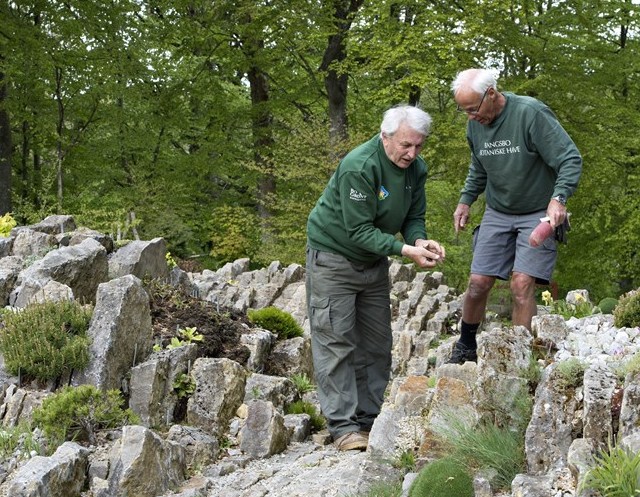.
The Crevice Garden and its Plants – Revised Edition by Zdenek Zvolanek published by the Alpine Garden Society, 2015, and available on their website. £9.95, £6.50 members. Currently unavailable from Amazon.
We’ve had this booklet around for some years, originally published in 2006. It is really the only English language practical book on crevice gardens and their construction. It has stood as a small, strong pillar supporting the entire weight of the need for such a book, and now there is a revised and updated version.
Crevice gardens are gaining recognition as a technique for growing rock garden and alpine plants in both wet and/or European climates, as well as in arid and/or dry Western American climates, so it was only fitting the book was expanded and updated. To be honest, there are only minor changes in the new edition including historical details, captions, citations and additional details and clarifications concerning construction methods and plants. I’d estimate that less than five percent was altered in the new edition, or at least it appears that way in a side-by-side comparison. The volume is a small paper bound handbook, yet packs an important punch. It has served as the only instructional reference for building crevice gardens, a burgeoning art form, a sub-field in the world of rock gardening. It is only available from the Alpine Garden Society webpage , shipped from the UK for US readers.
Its approach to crevice gardening is very hands-on and ZZ, or Zed Zed, as the author is affectionately known to us followers, chose to describe one construction style, his own, for building crevice gardens. In an effort to thoroughly cover what is potentially a very complicated subject. It would require a much larger book, which would certainly scare away a good portion of possible newbies or do-it-yourself home garden amateurs interested in building a crevice garden. The small format of the book serves the subject well.
The list of plants in the latter half of the book includes traditional rockery plants, as well as more challenging species that require a crevice garden to grow successfully. These are appropriate for the majority of the book’s readers in mesic continental climates, A coding system is used to maintain a universal for describing a plant’s needs in different climates.
There will soon be a need for a complete and broad-spectrum book to follow Zvolanek’s seminal effort in the new and expanding field of crevice gardening, especially their development in drier climates that beg different treatments and plants. There are a whole host of people building them and trying new variations on the author’s suggestions. Folks in different climates using different materials with different aims are experimenting with new techniques like diagonal and horizontal stratification, the use of rounded stones, crevice treatments that merge into open soil or traditional rock gardens, artificial soils, layer cake stratification processes, as pioneered by Stephanie Ferguson in Calgary, Alberta, Canada and even working with artificial materials like concrete and rigid masonry matrices, like at Denver Botanic Garden’s Steppe Garden. These new techniques are being tested and refined, expanding the field and pushing the definition of “crevice gardens”. Imagine tropical crevice gardens and indoor or windowsill crevice gardens!
In the future there may be fat volumes dedicated to the multiple styles of crevice gardens and different regional variations, but there will still be only one ZZ and his innovative vertically-oriented Czech style, the standard by which all future iterations will be evaluated. This small volume is the key to open the gardener’s door to the rewarding world of crevice gardening and belongs on every rock gardener’s shelf.
Kenton J. Seth is a thirty-something plant nut in western Colorado, USA who is one of just a few people worldwide who regularly build crevice gardens professionally. His personal obsessions are native grasses, agaves, cushions and small cacti, making every excuse to use them in his landscape designs and crevice gardens. He blogs about new developments in rock gardening on a blog called “I need a cup of tea”.

